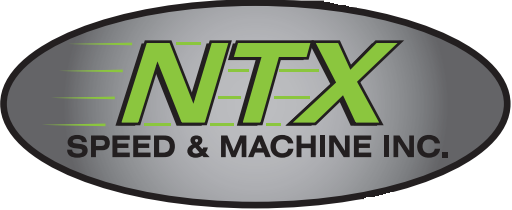Part 4 will focus on the Honing of the cylinders on the D16.
The cylinders have been machined on the cnc to within @.007" of the final size. The remainder will be honed out. Honing is a process very similar in operation to sanding. Instead of flexible abrasive paper we use a vitrified abrasive grinding stone. As it cycles up and down in the cylinder it grinds away the metal leaving scratches in the cylinder(cross hatch).
The first stones used are an abrasive equivalent to a 70 grit sand paper. This step will remove the metal at a pretty quick rate but will produce a surface finish thats way too rough for piston rings at 60 rms. With the rough stones I bring the diameter to within .0015" then it's time to step to a finer stone.
The next stone is equivalent to a 220 grit paper and can produce a cylinder wall with a 22-32 rms. At this point old style cast piston rings are happy with deep grooves to hold a lot of oil. With the the 220's the cylinder is honed to within .0005 of final size.
The second to last step will be a 280 grit equivalent that is capable of a 16-23 rms finish, which is really smooth. Now the cylinder will be honed to its final size of 2.963", which will give me a .0025" piston to wall clearance.
The final step in the honing is using a plateau hone brush that will break all of the peaks of the scratches left by the honing stones. This process used to be done by the piston rings and that was called "break in". But, when the piston rings performed this process they would get scratched in the process. So with an abrasive impregnated nylon brush I performed a plateau hone.
And that's honing a block.
For a video www.YouTube.com/abletrot
Matt W.
www.ntxmachine.com

No comments:
Post a Comment